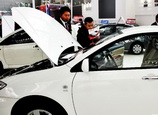
Opportunities abound as company's projects suit China's soaring demand
Every working day exactly 15 minutes after employees at Schneider Electric's China headquarters in Beijing are to leave work, the lights in the building go out. Those who need to stay late have to turn them back on to prevent their workspaces from being shrouded in darkness.
It is that kind of attention to saving energy that helped the French energy management company reduce the power used in its Beijing building from 160 kilowatt-hours per square meter a year in 2009 to 105 kW/h in 2011. The company now says it expects to have the amount reduced to 90 kW/h by 2014.
Making buildings energy efficient is one of Schneider Electric's specialties. And it has now set its sights on a bigger goal: making cities more sustainable, efficient and livable.
"It doesn't make sense to be leaders in energy management if we cannot address expectations and challenges cities are facing today," said Patrick Gaonach, China senior vice-president of strategy and business development at Schneider Electric.
"And China will represent a big proportion of this new market for us due to the number of its cities and the challenges they have."
Starting this year, Schneider Electric has been preparing to move forward with its initiative, Smart City Solutions, which will use different kinds of technologies to efficiently manage cities' energy, environments, water, space and other resources.
Gaonach noted that cities occupy about 2 percent of the land in the world but are home to about half of the population, use about 75 percent of the energy and are the source of about 80 percent of carbon emissions.















 Landmark building should respect the public's feeling
Landmark building should respect the public's feeling


![]()
